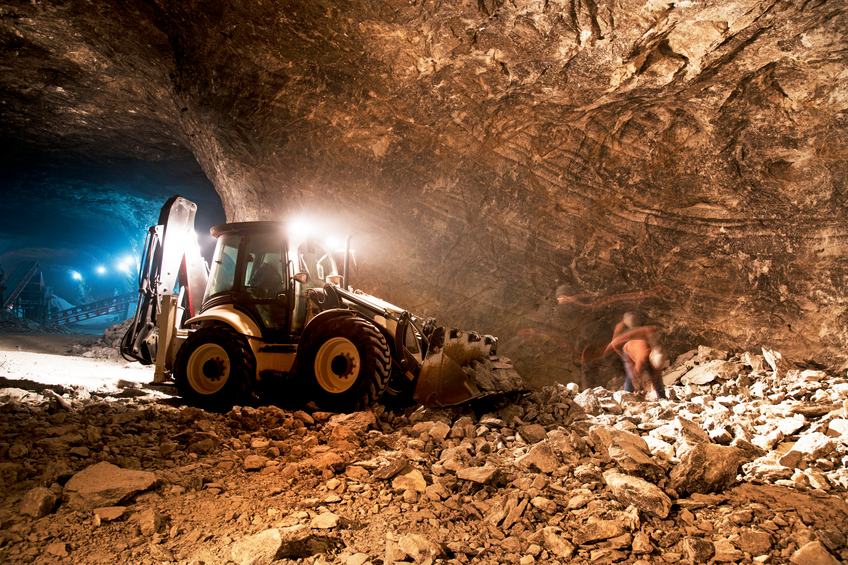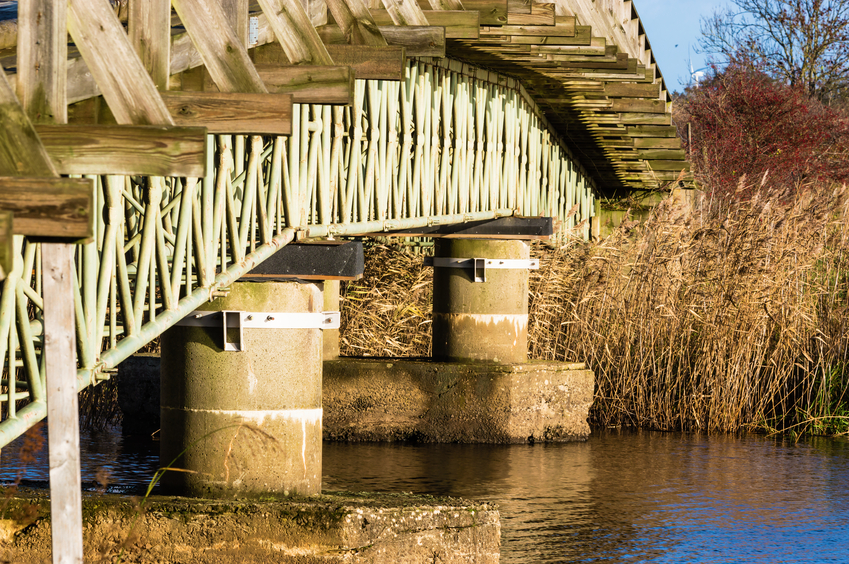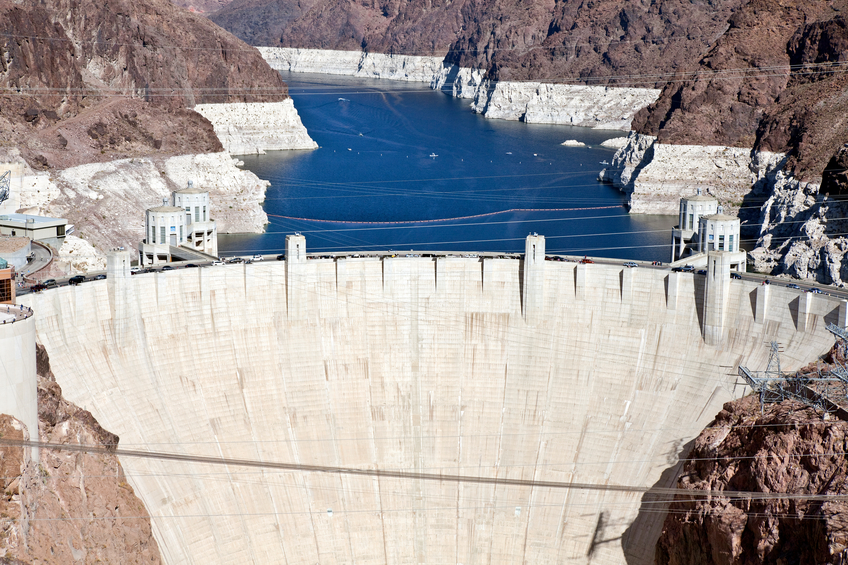Illinois Geotechnical and Laws/Rules/Ethics/Sexual Harassment 30 PDH Discount Package 3
Design of Pile Foundations (G10-001)
Design of Sheet Pile Walls (G05-001)
Hydraulic Performance of Shallow Foundations for the Support of Vertical-Wall Bridge Abutments (G07-007)
Selecting and Accommodating Inflow Design Floods for Dams (C04-055)
Sexual Harassment Prevention for Illinois Professionals (IL1-001)
Engineering Laws, Rules, and Ethics for Illinois Professional Engineers (IL2-001)

This online engineering PDH course provides an introduction to methods, techniques and equipment for selecting, placing and compacting fill and backfill materials for structure foundations.
Foundations may be constructed on fills and backfilled material. Fills may include conventional compacted fills; hydraulic fills; and uncontrolled fills of soils or industrial and domestic wastes, such as ashes, slag, chemical wastes, building rubble, and refuse. Properly placed compacted fill will be more rigid and uniform and have greater strength than most natural soils. Hydraulic fills may be compacted or uncompacted and are an economical means of providing fill over large areas. Except when cohesionless materials, i.e., clean sands and gravels, are placed under controlled conditions so silty pockets are avoided and are compacted as they are placed, hydraulic fills will generally require some type of stabilization to ensure adequate foundations.
This 1 PDH online course is intended for civil engineers, structural engineers, geotechnical engineers, geologists and other design and construction professionals seeking an introduction to methods and techniques for fill and backfill construction for foundations and footings for buildings and structures.
This PE continuing education course is intended to provide you with the following specific knowledge and skills:
- Learning about the different methods for compacting fills for foundations
- Knowing the types of fill and when their use is applicable
- Knowing the methods and techniques used to construct foundations on compacted fills
- Learning about the different compaction requirements for fills and backfills
- Understanding the fundamentals of placing and controlling fill and backfill
- Learning how to accommodate and control fill settlement
- Learning about hydraulic fills and their application
In this professional engineering CEU course, you need to review the course document titled, "An Introduction to Foundations on Fill and Backfilling".
Upon successful completion of the quiz, print your Certificate of Completion instantly. (Note: if you are paying by check or money order, you will be able to print it after we receive your payment.) For your convenience, we will also email it to you. Please note that you can log in to your account at any time to access and print your Certificate of Completion.

This online engineering PDH course provides guidance on foundation exploration and testing procedures, load test methods, analysis techniques, design criteria and procedures, and construction considerations for the selection, design, and installation of pile foundations. The guidance is based on the present state of technology for pile-soil-structure-foundation interaction behavior.
Since the understanding of the physical causes of pile behavior is actively expanding by better definition through ongoing research, prototype, model pile foundation testing and development of more refined analytical models, this course is intended to provide examples and procedures of what has been proven successful.
This 10 PDH online course is applicable to geotechnical and structural engineers as well as design and construction personnel interested in understanding the construction techniques related to pile behavior during installation.
This PE continuing education course is intended to provide you with the following specific knowledge and skills:
- Understanding the stratigraphy of the subgrade as well as its engineering geology characteristics
- Selecting the criteria, procedures and parameters necessary for the analysis and design of pile foundations
- Understanding the various engineering considerations pertaining to the construction of pile foundations
- Understanding the methodology and objective of the field pile test program
In this professional engineering CEU course, you need to review the US Corps of Engineers Publication EM 1110-2-2906, "Design of Pile Foundations"
Upon successful completion of the quiz, print your Certificate of Completion instantly. (Note: if you are paying by check or money order, you will be able to print it after we receive your payment.) For your convenience, we will also email it to you. Please note that you can log in to your account at any time to access and print your Certificate of Completion.

This online engineering PDH course provides guidance on foundation exploration and testing procedures, analysis techniques, allowable criteria, design procedures, and construction consideration for the selection, design, and installation of sheet pile walls and flood walls. The guidance is based on the present state of the technology for sheet pile-soil-structure interaction behavior.
Since the understanding of the physical causes of sheet pile wall behavior is actively expanding by better definition through ongoing research, prototype, model sheet pile wall testing and development of more refined analytical models, this course is intended to provide examples and procedures of what has been proven successful.
This 5 PDH online course is applicable to geotechnical and structural engineers as well as design and construction personnel interested in understanding the construction techniques related to sheet pile wall behavior during installation.
This PE continuing education course is intended to provide you with the following specific knowledge and skills:
- Understanding the stratigraphy of the subgrade as well as its engineering geology characteristics
- Understanding current methodologies for evaluating system loads that govern the design of a sheet pile wall
- Evaluating failure modes and selecting certain system parameters to prevent failure
- Selecting criteria, procedures and parameters necessary for the structural design of sheet pile walls
- Understanding the behavior of the wall/soil system (interface interaction analysis)
- Understanding the various engineering considerations pertaining to the construction of sheet pile walls
- Understanding the special design considerations pertaining to the construction of sheet pile walls
In this professional engineering CEU course, you need to review the US Corps of Engineers Publication EM 1110-2-2504, "Design of Sheet Pile Walls".
Upon successful completion of the quiz, print your Certificate of Completion instantly. (Note: if you are paying by check or money order, you will be able to print it after we receive your payment.) For your convenience, we will also email it to you. Please note that you can log in to your account at any time to access and print your Certificate of Completion.

This online engineering PDH course provides basic information on hydraulic performance of shallow foundations for the support of vertical-wall bridge abutments.
Scour at the base of bridge abutments during floods is a common cause of bridge failure in the United States. Shallow abutment foundations located at or near the channel banks are considered more vulnerable than other foundations because they are closer to the streambed and can significantly constrict flood flows. These types of abutments are frequently implemented for single-span bridges, and scour countermeasures are often integrated into the design to avoid placing the foundation below local scour depth.
Therefore, to protect small single-span bridge abutments built on shallow foundations from scour damage, methods for countermeasure design are needed that consider the abutment foundation and scour countermeasures as an integrated component of the bridge. The research study described in this course is designed to provide a complete picture of the flow field and local bed shear stresses on heterogeneous bed roughness in the bridge opening.
This 7 PDH online course is applicable to geotechnical engineers who are interested in improving their knowledge about scours occurring at the base of bridge abutment during floods.
This PE continuing education course is intended to provide you with the following specific knowledge and skills:
- Familiarizing with the performed literature research to determine depth and location of scour
- Understanding the proposed guidance on the hydraulic requirements for shallow abutment foundations
- Gaining a general overview of the development of a conceptual model for the increased shear in the middle of the contracted channel section
- Learning about the experimental equipment, program, and findings for several abutment riprap layouts
- Understanding the different design guidelines and requirements for riprap aprons for vertical-wall abutments with shallow foundations
In this professional engineering CEU course, you need to review the course document titled, "Hydraulic Performance of Shallow Foundations for the Support of Vertical-Wall Bridge Abutments”, which is based on the Department of Transportation document “Hydraulic Performance of Shallow Foundations for the Support of Vertical-Wall Bridge Abutments”, Publication No. FHWA-HRT-17-013.
Upon successful completion of the quiz, print your Certificate of Completion instantly. (Note: if you are paying by check or money order, you will be able to print it after we receive your payment.) For your convenience, we will also email it to you. Please note that you can log in to your account at any time to access and print your Certificate of Completion.

This online engineering PDH provides basic guidelines for selecting and accommodating inflow design floods for dams based on current and accepted practices.
Appropriate selection of the Inflow Design Flood is the first step in evaluating and designing a dam to address hydrologic potential failure modes and reduce risks to the public. Existing guidelines of most state and federal agencies for evaluating the hydrologic safety of dams were written in the late 1970s. Since that time, significant technological and analytical advances have led to better watershed and rainfall information, improvements in the analysis of extreme floods, greater sophistication in means to quantify incremental dam failure consequences, and tools for evaluating hydrologic events in a risk-based context.
This 4 PDH online course is applicable to geotechnical and civil engineers, dam owners or regulators, and other technical personnel interested in gaining a better knowledge on inflow design floods for dams.
This PE continuing education course is intended to provide you with the following specific knowledge and skills:
- Learning about the dam classification system
- Understanding the guidelines for selecting the inflow design flood
- Learning about spillway characteristics (mainly controlled versus uncontrolled)
- Familiarizing with routing the inflow design flood
- Familiarizing with freeboard requirements
- Defining terminology and acronyms associated with the overall scope of the course
Upon successful completion of the quiz, print your Certificate of Completion instantly. (Note: if you are paying by check or money order, you will be able to print it after we receive your payment.) For your convenience, we will also email it to you. Please note that you can log in to your account at any time to access and print your Certificate of Completion.

This online PDH course presents a training on sexual harassment prevention in order to adopt and actively implement policies that ensure that workplaces are safe for employees to report and express their concerns about sexual harassment.
The Illinois Human Rights Act makes it a civil rights violation “[f]or any employer, employee, agent of any employer, employment agency or labor organization to engage in sexual harassment.” 775 ILCS 5/2-102(D).
The Illinois General Assembly finds that tolerance of sexual harassment has a detrimental influence in workplaces by creating a hostile environment for employees, reducing productivity, and increasing legal liability. Therefore, every employer in the State of Illinois is required to provide employees with sexual harassment prevention training that complies with section 2-109 of the Illinois Human Rights Act (“IHRA”).
This 1 PDH online course is applicable to professionals licensed in the State of Illinois and who are required to demonstrate continuing professional competency in sexual harassment prevention training as a condition of their license renewal.
This PE continuing education course is intended to provide you with the following specific knowledge and skills:
- Gaining an overview of sexual harassment prevention consistent with the Illinois Human Rights Act
- Familiarizing with types of unlawful sexual harassment, unwelcome behavior and working environment
- Learning about examples of conduct that may constitute unlawful sexual harassment
- Understanding sexual harassment in online environments
- Understanding employer responsibilities in the prevention, investigation, and corrective measures on sexual harassment
- Familiarizing with the Federal and State statutory laws concerning sexual harassment including remedies available to victims
Upon successful completion of the quiz, print your Certificate of Completion instantly. (Note: if you are paying by check or money order, you will be able to print it after we receive your payment.) For your convenience, we will also email it to you. Please note that you can log in to your account at any time to access and print your Certificate of Completion.

This online engineering PDH course presents the laws and rules of ethics and professional responsibility governing the practice of engineering in the State of Illinois.
Engineering ethics is (1) the study of moral issues and decisions confronting individuals and organizations involved in engineering and (2) the study of related questions about moral conduct, character, ideals and relationships of peoples and organizations involved in technological development (Martin and Schinzinger, Ethics in Engineering).
Excerpts from the Professional Engineering Practice Act of 1989, 225 ILCS 325 and the Illinois Administrative Code, Part 1380, which relate to the rules of profession conduct, continuing education requirements, proper use of seal and other pertinent regulatory provisions are presented in this course.
This 2 PDH online course is applicable to Professional Engineers licensed in the State of Illinois who are required to demonstrate continuing professional competency in the Illinois Laws, Rules and Ethics as a condition of license renewal. For each renewal period, every licensee must complete thirty (30) professional development hours, at least one (1) of the 30 hours must be in professional ethics and one (1) of the 30 hours must be in the laws and rules regulating the practice of engineering in the State of Illinois.
This PE continuing education course is intended to provide you with the following specific knowledge and skills:
- Familiarizing with the laws and rules regulating the practice of engineering in the State of Illinois
- Learning about engineering ethics, the rules of professional conduct and responsibility
- Understanding the role of the Illinois Board and its disciplinary authority
- Understanding the continuing education requirements in the State of Illinois
- Gaining an overview of disciplinary cases, violations and their corresponding penalties imposed by the Illinois Board
Upon successful completion of the quiz, print your Certificate of Completion instantly. (Note: if you are paying by check or money order, you will be able to print it after we receive your payment.) For your convenience, we will also email it to you. Please note that you can log in to your account at any time to access and print your Certificate of Completion.